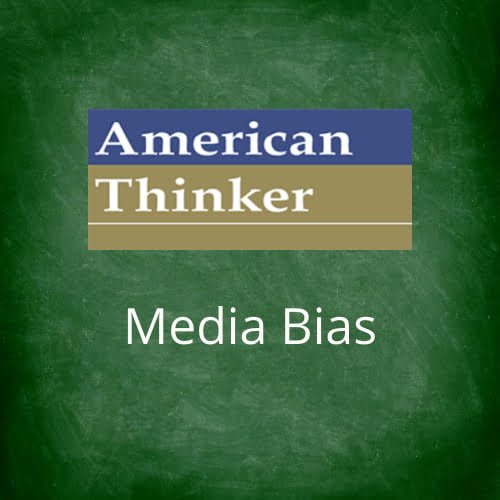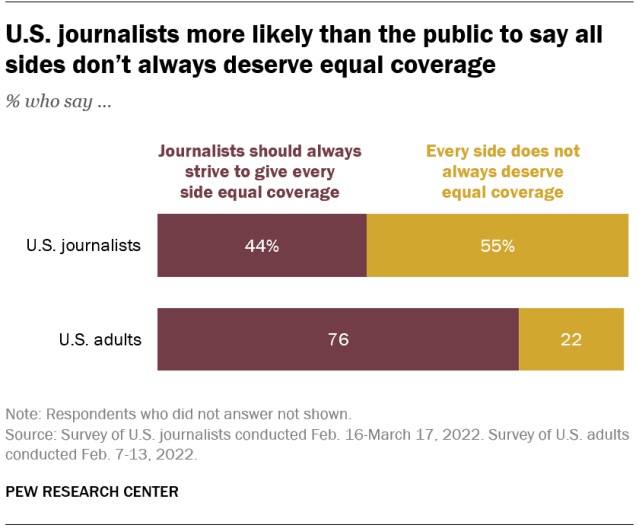
Launched in 2003 out of El Cerrito, California, Thomas Lifson has since turned his platform into a daily internet magazine devoted to issues Americans face in their day-to-day lives. Subsequently, the American Thinker puts no limits on topics found on their site, ranging from business, science, and technology- to strategic, economic, and military implications regarding national security.
The site deems that “there is no limit to the topics appearing on American Thinker.” In turn,
this article will focus on this outlet’s coverage and substance to determine whether political bias is prominent in their reporting. This analysis hopes to provide a complete answer to whether or not the American Thinker is biased while discussing the factors that generally lead to media bias.
How Does Biasly Rate News Sources?
Biasly’s algorithms produce bias ratings to help provide multiple perspectives on given articles. Biasly has analyzed 200,000+ news articles from more than 3,200 news sources through our A.I. technology and team of political analysts to find the most factual, unbiased news stories.
Biasly determines the degree of political bias in news sources by using Biasly’s Bias Meter Rating, in which Biasly’s team analyzes media sources’ reliability and bias and produces three scores, a Reliability Score that measures the accuracy of media sources; an A.I. Bias Score, evaluated by A.I.; and an Analyst Bias Score evaluated by political analysts. These scores are rated based on seven rating metrics including Tone, Tendency, Diction, Author Check, Selection/Omission, Expediency Bias, and Accuracy. These metrics help our analysts to determine the political attitude of the article.
Our A.I. machine-learning system employs natural language processing and entity-specific sentiment analysis to examine individual articles and determine their bias levels. By analyzing the key terms in an article such as policies, biased phrases, political terminologies, politicians, and their nicknames, the algorithms can rate the attitude of the text. Bias scores range from -100% and 100%, with higher negative scores being more liberal and higher positive scores being more conservative, and 0% being neutral.
Is the American Thinker Politically Biased?
Despite the American Thinker’s online magazines being devoted to “the thoughtful exploration of issues of importance to Americans,” many critique the source for writing from an extremely conservative viewpoint.
For example, Biasly’s A.I American Thinker Media Bias Score sits at “Extremely Conservative” with a similar Policy Leaning score, which means it provides political coverage from an American conservative political perspective.
Bialsy’s scores closely align with third-party sources which also agree that American Thinker displays media bias strongly aligning with conservative and right-wing policy agendas.
Similarly, MBFC gives American Thinker an “Extreme Right” bias, adding that there is a “promotion of conspiracy theories/pseudoscience, use of poor sources, and several failed fact checks.”
Throughout the latter parts of the article, the goal is to present to you, the reader, ways to identify bias in the American Thinker so that you cannot only be a more informed reader but have an idea as to how to separate fact from opinion.
Before we begin, we need to discuss bias. Bias is a natural function of humans, and we can express it both consciously and unconsciously. Bias is one of the most fundamental forms of pattern recognition in humans. This isn’t to lower the bar and say that “all things are biased,” but to explain the process in which we may come to trust certain news organizations that display patterns of coverage.
On the media’s part, there is an incentive to retain audiences, encourage them to purchase subscriptions, and rate products positively. Bias is a two-way street, people want to see news stories about things they care about, and the media needs viewers to continue their operations. This creates a positive feedback loop that influences what stories are covered and from what perspective. This also explains the actions of more liberal news organizations.
Consider also this graph from Pew Research, which determined that U.S. journalists believe that all sides of a story don’t always deserve equal coverage:

Source: Pew Research
Although this seems rather broad, it is important to understand that everyone’s perspective of the media (including the media itself) varies drastically.
Analysis of Bias in American Thinker Online Articles
To determine bias, common metrics that we typically use and will focus on in this article include Tone, Author, and Diction. Tone is the attitude used in writing while diction focuses specifically on the word choice used by the author. Lastly, the author metric looks at the author’s stance and how it affects their writing by examining social media pages, past articles, etc.
The first article we’ll take a look at is titled “Are We Stuck With Biden?” by Paul Gottfried. Biasly rates this article as “Very Conservative.” Immediately, we can see where this rating is derived from as the politician’s portrayal score is 100% negative, indicating that the author writes critically of left-wing President Biden.
Moreover, the tone is clearly stated in the opening paragraph of the article, where Gottfried claims there has been:
“abundant evidence that Biden’s lapses and incoherent speech patterns have grown worse since his election.”
Additionally, there is a persistent negative tone towards the Biden administration, including several digs at vice-President Kamala Harris, such as the following:
“She also luckily came from a racially mixed parentage with a Marxist revolutionary academic father.”
In turn, the tone clearly illustrates negative opinions toward the Biden administration- there are no lines in the article that foster any positive thoughts about the current President.
Similarly, the diction is harsh towards Biden and rejects that his administration is doing anything correctly. Words such as “failure,” “corrupt, and ”incompetence“ summarize the author’s stance on Biden and his team thus creating bias.
For example, when talking about approval ratings, the author says this:
“No matter how disastrously his administration performs, he remains enormously popular with the public. According to Rasmussen, which seems to be a reliable poll, Biden’s popularity has been hovering around 50%.”
Not only does the author use the word disastrous to insinuate a negative performance in the office thus far, but also questions (using the phrase “seems to be”) the results of an approval poll, again confirming the author’s disapproval. Even if the author is partially correct, which we aren’t saying one way or the other, using softer language with a perspective from the other side could help improve the author’s argument.
Lastly, author Paul Gottfried is a self-defined paleoconservative political philosopher– which he labels as a:
“society of the independent Right… well-educated young professionals, who consider themselves to be on the right, but not of the current conservative movement” (The New Yorker).
Moreover, his other articles and published books also reveal his biases and personal opinions concerning right-leaning topics such as conservatism and change, human rights, and foreign policy. In the article, Gottfried demonstrates omission bias by selectively choosing data regarding inflation and illegal immigration to paint the Biden administration in a negative light.
Gottfried excludes any sources that would negate claims made about the Biden administration, which recall that Biasly rated the politician portrayal score in this article as 100% negative.
As a result, the author writes only in favor of one side of the political spectrum which is also reflected in the tone and diction as discussed above.
While this article was found to be right-leaning, this also aligns with Biasly’s analysis of the American Thinker, which was labeled as “Very Conservative.” Being conscious of where these sources lie in terms of their political biases helps readers to get the most out of the news articles that they are consuming.
Take this article for example, which is an article without bias by the American Thinker titled “What is Election Certification?” As a result of its neutrality, Biasly rates this article as “Center” with language that is very cut and dry, informative, and avoids any language that would look to sway a reader in one political direction or the other:
“The definition of certification is being officially attested or authoritatively confirmed as being genuine or true as represented, or complying with or meeting specified requirements or standards.”
“We are being continually hammered by pernicious media to deny the reality staring us in the face.”
There is little to no trace of the author’s opinion or belief being inserted into the article, so this is a better example of a less-biased writing piece.
Analysis of American Thinker Opinion Articles
While there is a significant difference between opinions and reporting, it is important to understand these differences to not let opinions from “professional” sources mislead you. The articles below are blog posts, meaning that an author is expressing their personal views on certain issues. This is unlike reporting, where the goal is to inform readers and neutrally present issues. Consider the following articles as we uncover where bias may arise.
First, the article, “Border czar Kamala Harris beclowns herself trying to answer a reporter’s question about migrant surge”, has a title loaded with bias and negative insinuations about Kamala Harris. By saying that Harris is making a fool of herself suggests that the author believes she is incompetent– without any background information whatsoever. Beyond this, there is a plethora of similar bias and negative opinions of Harris and her administration throughout, in turn being the exact opposite of a neutral reporting article.
On the other hand, “A Century of ‘Climate Change’” has a more objective title and one can determine that the article will look to provide some information and answers about climate change. In turn, this article has less bias (which is a good thing) because neutral language and credible sources are referenced. Just from the title, an author is not looking to push a reader one way or the other.
Despite the analysis thus far, the articles from the American Thinker that have been addressed so far are only a small representation of the source’s content as a whole. By continuing to look at each article individually, differences between subjective writing and genuine reporting can be determined.
Who Owns the American Thinker?
The American Thinker is a small daily online magazine founded in 2003 by Thomas Lifson. Lifson is described as a “Democrat by birth, Thomas became more conservative in adulthood as reality taught him that dreams of a perfect human society always run smack into human shape” (American Thinker About Us).
Co-founder Richard Baehr is a chief political correspondent and management consultant in the healthcare field, while Ed Lasky is a former attorney. As such, contributors are accomplished in their fields yet it is clearly stated that pieces are written with conservative leanings. Additionally, their webpage reads that there is an Intention to write for the general public out of concern for complex moral questions on the national agenda, such as national security.

Pictured: Richard Baehr, Kenyon College Alumni
Source: Kenyon College Alumni Bulletin
How to Evaluate and Uncover Bias
It can often be difficult to tell if the news you watch is biased. If you have settled on a news channel, it’s usually because you trust the information you are gaining. Unfortunately, many trust the information they are hearing because it confirms what they already believe. This is referred to as “confirmation bias.” It is important to challenge your beliefs and get third-party verification that what you are hearing is the full story. This is why we recommend using Biasly to compare different news stories side-by-side using our bias ratings to figure out what both sides think of a political issue.
Although Biasly gave the American Thinker a Liberal bias score, remember that bias varies between articles, so one bias score may be completely different from another. Additionally, some pieces will have more or less bias based on the type; authors can easily insert more bias in political articles than other newsworthy topics. As a result, it is important to use Biasly’s News Check to continue to help determine the bias in what media you consume.






















